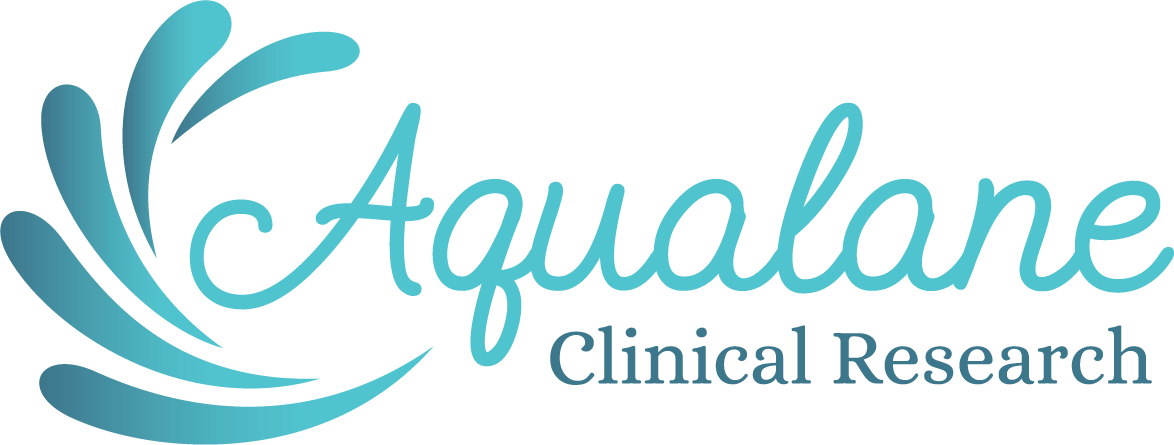Myasthenia Gravis (MG) is a chronic autoimmune disorder characterized by varying degrees of weakness in the body’s voluntary muscles. Often, people with Myasthenia Gravis first notice eye-related symptoms—drooping eyelids or double vision—before it progresses to other muscle groups responsible for facial expressions, swallowing, or limb movements. While there’s currently no known cure, early detection, proper treatment, and supportive strategies can significantly improve both daily functioning and long-term outcomes.
In this article, we’ll explore the fundamentals of Myasthenia Gravis—what it is, how it’s diagnosed, and the treatment options that can help many individuals live active and fulfilling lives. We’ll also discuss the ways in which Aqualane Research supports brain health and overall well-being for those coping with neurological and autoimmune conditions.
What Is Myasthenia Gravis?
Myasthenia Gravis (MG) is an autoimmune disease where the immune system mistakenly attacks the communication point between nerves and muscles—specifically, the neuromuscular junction. This immune-mediated interference reduces the effect of acetylcholine, a key neurotransmitter responsible for muscle contraction. As a result, muscles can’t contract effectively, leading to fluctuating weakness that often worsens with activity and improves with rest.
Key Facts
- Autoimmune in Nature: The body produces antibodies that block or destroy acetylcholine receptors or related proteins at the neuromuscular junction.
- Muscle-Group Specific: MG primarily affects skeletal (voluntary) muscles, especially those controlling eye movements, facial expressions, and swallowing.
- Onset: Symptoms can begin at any age, though two peaks are common—women typically between 20–30 years old, and men 50+.
- Variable Progression: MG often starts with ocular symptoms (ptosis, diplopia), but can spread to other muscle groups over time.
Recognizing Signs and Symptoms
While symptoms can differ, the hallmark of Myasthenia Gravis is muscle weakness that worsens with activity but improves after periods of rest. Common presentations include:
- Drooping Eyelids (Ptosis)
A frequent early complaint. Eyelid muscles tire easily, causing partial closure of one or both eyelids. - Double Vision (Diplopia)
Weakness in eye muscles can make it difficult for both eyes to focus together. - Facial Expression Changes
Smiling, speaking, or chewing can become challenging, leading to slurred speech or difficulty swallowing (dysphagia). - Neck and Limb Weakness
Some people notice trouble holding their head upright or lifting objects, with weakness often most pronounced after repeated use of the muscles. - Respiratory Complications
In severe cases (known as a myasthenic crisis), muscle weakness can extend to the respiratory system, necessitating urgent medical care.
Because symptom severity can fluctuate, Myasthenia Gravis may be overlooked or misdiagnosed in its early phases, underscoring the need for comprehensive medical evaluation.
Causes and Risk Factors
MG arises from a malfunction in the immune system, but what triggers this autoimmune response varies. Certain risk factors and associated conditions include:
- Thymus Abnormalities: The thymus gland, part of the immune system, is sometimes enlarged or has thymomas (benign tumors) in people with MG.
- Genetic Susceptibility: While not strictly hereditary, having a family member with autoimmune disease can raise your likelihood of developing MG.
- Co-Occurring Autoimmune Disorders: MG sometimes appears alongside other autoimmune conditions (e.g., rheumatoid arthritis, thyroid disease).
- Age and Gender: Women tend to present with MG earlier than men, though men’s symptoms more commonly begin after age 50.
Diagnostic Process
Because Myasthenia Gravis can mimic other neuromuscular or ocular disorders, physicians typically deploy several diagnostic measures:
- Clinical Examination: Neurologists observe muscle strength and endurance, possibly testing for fatigability (e.g., repeated blinking or prolonged upward gaze).
- Edrophonium Test (Tensilon Test): Though used less frequently now, injecting edrophonium chloride temporarily boosts acetylcholine levels, yielding a brief improvement in muscle strength if MG is present.
- Antibody Blood Tests: Detect specific autoantibodies, such as anti-acetylcholine receptor antibodies (AChR) or anti-MuSK (muscle-specific kinase) antibodies.
- Electromyography (EMG): Repetitive nerve stimulation can reveal characteristic fatigue responses in muscles innervated by tested nerves.
- Imaging: A CT or MRI scan of the chest may look for thymic abnormalities (thymoma or hyperplasia) associated with MG.
Timely diagnosis opens the door to more effective treatments and may reduce the risk of complications like myasthenic crisis.
Treatment Approaches
There is no single cure for Myasthenia Gravis, but various medical interventions and lifestyle changes can greatly improve muscle strength and reduce symptom severity.
Medications
- Acetylcholinesterase Inhibitors (e.g., Pyridostigmine)
Boost acetylcholine levels at the neuromuscular junction, relieving muscle weakness in many patients. - Immunosuppressants
Drugs like prednisone, azathioprine, or mycophenolate mofetil help curb the immune response causing receptor damage. - IV Immunoglobulin (IVIG) or Plasmapheresis
Short-term therapies used during exacerbations or pre-surgery, removing harmful antibodies or blocking their effects. - Monoclonal Antibodies (e.g., Rituximab, Eculizumab)
Target specific components of the immune system; beneficial in refractory MG cases.
Thymectomy (Surgical Removal of Thymus)
- Rationale: While not all MG patients have thymic abnormalities, thymectomy can reduce symptom intensity or medication needs, especially in younger adults with generalized MG.
- Outcomes: Some patients experience significant improvement or even remission after thymus gland removal.
Lifestyle and Symptom Management
Self-care and proactive health habits can make a pivotal difference in living well with MG:
- Energy Conservation
Plan tasks around peak energy times. Regular short rest breaks help muscle recovery, particularly for repetitive activities like chewing or typing. - Diet and Swallowing Modifications
If chewing or swallowing is tough, softer diets or thickened liquids can prevent aspiration. Hydration is also critical for muscle function. - Stress Reduction
Mental strain and emotional turmoil may aggravate autoimmune activity. Techniques such as meditation, deep breathing, or counseling can provide relief. - Eye Care
Use lubricating eye drops if blinking is compromised, and consider an eye patch for diplopia. - Temperature Control
Some MG symptoms worsen with extreme heat or cold. Air conditioning, wearing layers, and avoiding high-temperature environments can help maintain stable strength.
Potential Cognitive Impact
While Myasthenia Gravis predominantly affects neuromuscular transmission, chronic illness, fluctuating energy levels, and the emotional toll of living with MG can indirectly influence cognitive processes—like attention, concentration, and memory retention. Increased fatigue or disrupted sleep may exacerbate this “brain fog,” though it is not a core symptom of MG.
- Memory Screenings: If you suspect your recall or focus is affected, a quick, noninvasive screening can clarify if these issues are primarily fatigue-related or indicative of another concern.
- Stress Management: Chronic pain or worry about muscle fatigue can add mental load, highlighting the importance of psychological support or therapy.
Emotional Support and Caregiver Engagement
Living with Myasthenia Gravis can be emotionally and physically challenging—particularly when flares interrupt daily life or lead to anxieties about muscle weakness. Key resources include:
- Support Groups: Online or in-person communities provide shared experiences, tips, and emotional solidarity.
- Counseling/Therapy: Professional guidance helps process the frustration and fear that may accompany unpredictable symptoms.
- Caregiver Education: Spouses, partners, or family members often benefit from learning about MG’s variable course and from establishing consistent routines.
- Patient Advocacy Organizations: Groups like the Myasthenia Gravis Foundation of America (MGFA) offer a wealth of educational materials, patient stories, and updates on ongoing research.
Research Developments
Medical understanding of Myasthenia Gravis continues to evolve. Exciting areas of exploration include:
- Targeted Immunotherapies: Investigating novel biologic drugs that modulate immune pathways specific to MG.
- Genetic Studies: Identifying genetic factors that may predispose individuals to autoimmune disorders like MG.
- Biomarkers: Finding blood or imaging markers that detect MG early or predict relapses, leading to more personalized treatment regimens.
- Clinical Trials: Many new medications, including next-generation monoclonal antibodies, are under review, offering potential alternatives for those unresponsive to conventional therapies.
How Aqualane Research Can Help
Although we primarily focus on memory and brain health, Aqualane Research recognizes the interconnectedness of neurological and autoimmune conditions. We stand ready to:
- Provide Memory Screenings
Individuals coping with MG can experience mental fatigue or worry about cognitive clarity. Our free memory screenings can rule out additional concerns or reveal if you could benefit from further support. - Offer Workshops and Seminars
We periodically host events emphasizing stress management, neuro-wellness, and healthy living. These can be particularly relevant for anyone managing chronic illness. - Referrals and Collaborations
We can connect patients to local support groups, physical therapists, or neurology resources adept at handling MG. - Ongoing Education
Keep an eye on our Homepage for updated blog posts, articles, and events bridging the gap between medical research and real-world patient experiences.
We’re deeply committed to improving quality of life for those facing a range of neurological and cognitive challenges. Contact Us if you have questions or need guidance on next steps.
Frequently Asked Questions (FAQ)
1. Can Myasthenia Gravis go into remission?
Yes. Some individuals, particularly those who undergo thymectomy or respond well to immunosuppressive treatments, may experience extended periods with minimal symptoms.
2. Is MG contagious or hereditary?
No. Myasthenia Gravis is an autoimmune disorder and is neither infectious nor strictly inherited, although genetic predisposition might slightly increase risk.
3. Does MG only affect the eyes?
While ocular muscles are commonly involved, generalized MG impacts facial, swallowing, limb, and sometimes respiratory muscles.
4. Are there alternative or holistic therapies for MG?
Some patients find complementary approaches—like acupuncture, dietary changes, or stress-reduction techniques—helpful. However, these should be adjuncts, not replacements, to proven medical therapies.
5. Can exercise worsen MG?
Moderate, gentle exercise under medical supervision can be beneficial, but overexertion risks exacerbating muscle fatigue. Balancing rest and activity is key.
Conclusion: Empowering Lives with Myasthenia Gravis
Despite its challenges, Myasthenia Gravis need not overshadow your aspirations or undermine your daily life. Through thorough diagnosis, tailored treatments, diligent self-care, and emotional support, many individuals with MG successfully manage symptoms, uphold meaningful personal and professional roles, and enjoy sustained well-being.
If you’re experiencing possible MG-related muscle weakness or are already diagnosed and curious about optimizing your overall neurological health, remember that Aqualane Research is here to bolster your journey. By staying informed, engaging in proactive management strategies, and seeking out supportive communities, you can transform Myasthenia Gravis from a daunting condition into a manageable aspect of your multifaceted life.
Ready to Explore More?
- Visit Our Homepage: Learn about our free memory screening program and other brain health resources at Aqualane Research.
- Contact Us: Have questions or need referrals? We invite you to reach out for more information and tailored guidance.
Empower yourself through knowledge, community, and expert care—essentials in paving a path toward better health and resilience in the face of Myasthenia Gravis.

